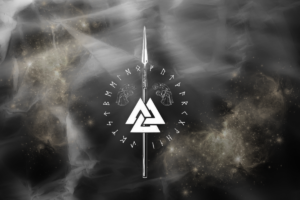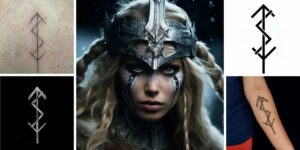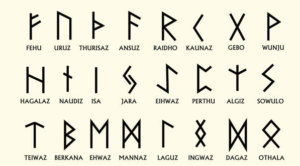Scandinavian runes, the ancient alphabetic scripts of the Norse and Germanic peoples, hold a timeless allure that transcends their historical origins. These angular, enigmatic symbols, etched into stone, wood, and metal, served as both a writing system and a conduit for mystical and cultural expression. Rooted in the traditions of the Viking Age and earlier Germanic societies, runes embody historical, mystical, and artistic significance. Their enduring fascination lies in their connection to Norse mythology, their practical applications in Viking society, and their revival in modern spirituality and popular culture. This essay explores the origins, meanings, uses, and contemporary relevance of Scandinavian runes, offering insight into their lasting legacy.
The Origins of Scandinavian Runes
The runic alphabet emerged around the 2nd century CE with the Elder Futhark, the earliest known runic script, consisting of 24 characters. Used across Germanic tribes, it was employed to write early Germanic languages. According to Norse mythology, the god Odin discovered the runes after a profound sacrifice, hanging himself on the world tree Yggdrasil for nine days and nights, as recounted in the Hávamál. This divine origin imbued runes with spiritual significance, elevating them beyond mere letters.
By the 8th century, the Elder Futhark evolved into the Younger Futhark, a simplified 16-character alphabet used during the Viking Age (c. 790–1100 CE). This transition reflected the phonetic changes in Old Norse and the need for a more streamlined script. The Younger Futhark, with its long-branch and short-twig variants, became the dominant writing system in Scandinavia. Regional variations, such as the Anglo-Saxon Futhorc, which expanded the rune set to accommodate the Old English language, also developed, particularly in England.
Understanding the Runic Alphabets
The Elder Futhark, used from the 2nd to 8th centuries, was a versatile script with 24 runes, each representing a sound and a concept, such as Fehu (wealth) or Ansuz (wisdom). Its complexity allowed for detailed inscriptions, often found on early artefacts like combs and weapons. In contrast, the Younger Futhark, prevalent during the Viking Age, reduced the number of runes to 16, making it less suited for precise phonetic representation but more practical for the evolving Old Norse language. The Younger Futhark’s long-branch runes were used primarily in Denmark, while the short-twig variant was common in Sweden and Norway, reflecting regional preferences.
The Anglo-Saxon Futhorc, used in England from the 5th to 11th centuries, expanded the Elder Futhark to include up to 33 runes, accommodating the phonetic needs of Old English. Each runic system demonstrates the adaptability of runes to linguistic and cultural contexts, highlighting their dynamic evolution.
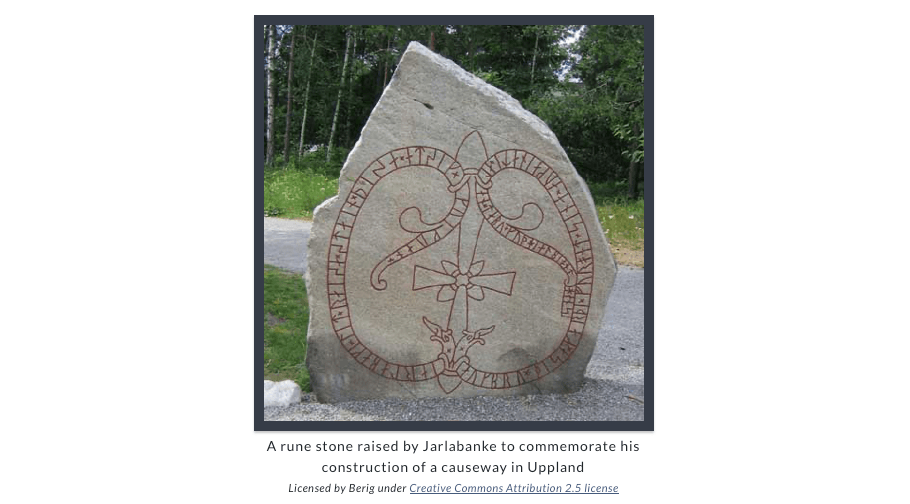
The Meanings and Symbolism of Key Runes
Runes were more than a writing system; they carried profound symbolic meanings. For example, Fehu (ᚠ) represented wealth and prosperity, often associated with cattle in early Germanic society. Ansuz (ᚨ), linked to divine inspiration and communication, was tied to Odin’s wisdom. Tiwaz (ᛏ), symbolising justice and honour, was associated with the god Tyr. These meanings made runes powerful tools for divination and magic, with practitioners casting rune stones to gain insight into the future or invoke protection.
Runic inscriptions on artefacts, such as the famous Jelling Stones in Denmark, reveal their cultural significance. The larger Jelling Stone, erected by King Harald Bluetooth in the 10th century, commemorates his unification of Denmark and Christianisation efforts, blending runic tradition with emerging religious shifts. Similarly, inscriptions on weapons and jewellery often served as talismans, invoking strength or protection.
How Vikings Used Runes in Daily Life
In Viking society, runes were practical and multifaceted. They were used in trade to mark goods, in memorials to honour the dead, and in spells for protection or success. Runestones, large boulders inscribed with runes, dotted the Scandinavian landscape, serving as public monuments. The Jelling Stones, for instance, are enduring testaments to Viking craftsmanship and political ambition. Runes also appeared in poetry, such as the Hávamál, where their mystical properties were celebrated.
Runes were not solely utilitarian; they were deeply embedded in Viking spirituality. Inscriptions on amulets and tools suggest their use in rituals, with specific runes chosen for their symbolic power. This blend of practicality and mysticism underscores the runes’ integral role in Viking culture.
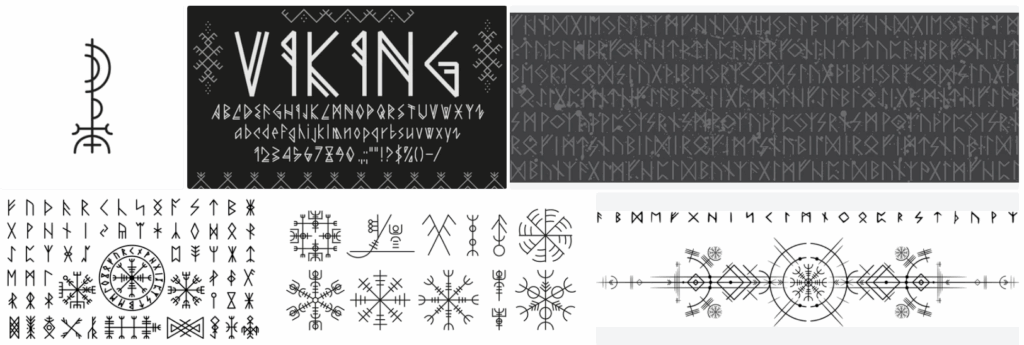
Scandinavian Runes in Modern Times
Today, Scandinavian runes enjoy a renaissance in neo-paganism and modern spirituality. Practitioners of Ásatrú and other Norse-inspired faiths use runes for divination, meditation, and rituals, drawing on their ancient meanings. Runes have also permeated popular culture, appearing in television series like Vikings, video games like God of War, and as popular tattoo designs. Their stark, angular aesthetic lends itself to artistic expression, from jewellery to graphic design.
Digital tools have made runes more accessible. Online rune converters, such as those offered by Valhyr, allow users to transliterate modern words into runic script, fostering interest among enthusiasts. These tools, combined with educational resources, have democratised the study of runes, bridging ancient tradition with modern technology.
How to Read and Write Runes Today
Reading and writing runes today requires understanding their phonetic and symbolic properties. To transliterate modern English into Younger Futhark, one must map sounds to the 16 available runes, a process complicated by the script’s limited character set. For example, the word “strength” might be approximated as ᛋᛏᚱᛖᚾᚴᚦ (s-t-r-e-n-k-th), though some sounds lack direct equivalents. Common mistakes include misinterpreting runes or ignoring regional variations, such as confusing long-branch and short-twig forms.
For those eager to learn, resources abound. Books like The Viking Spirit by Daniel McCoy and websites like Sons of Vikings provide detailed guides to runic alphabets and their meanings. Online communities and tools, such as Twinkl’s educational materials, offer accessible introductions for beginners.
Conclusion
Scandinavian runes are a testament to the ingenuity and spirituality of the Norse and Germanic peoples. From their origins in the Elder Futhark to their streamlined Younger Futhark form, runes have served as tools of communication, magic, and commemoration. Their practical use in Viking trade, memorials, and poetry, combined with their mystical significance, has ensured their enduring legacy. Today, runes continue to captivate, whether through their role in modern spirituality, their presence in popular culture, or their accessibility via digital tools. For those intrigued by history or seeking personal connection to ancient traditions, runes offer a fascinating journey into the past and a versatile tool for the present.




